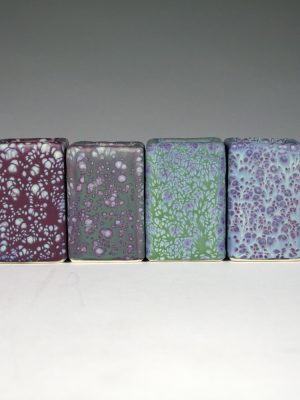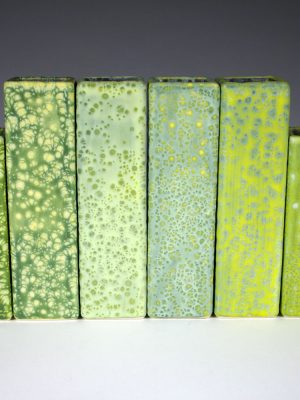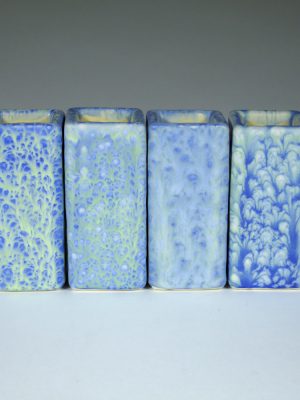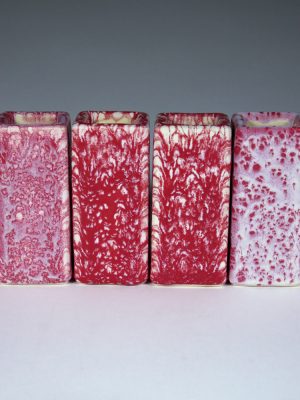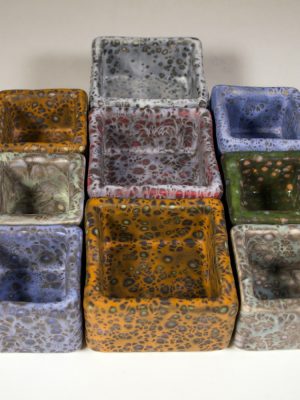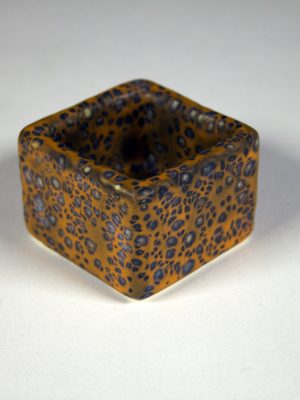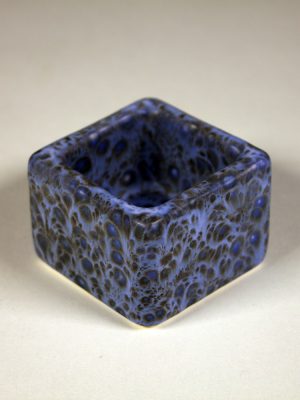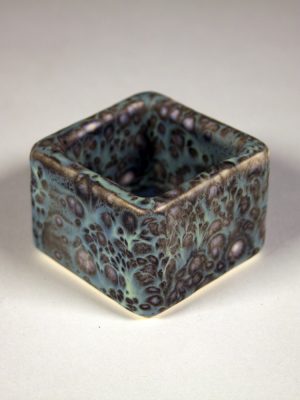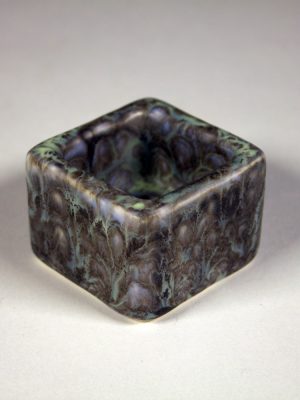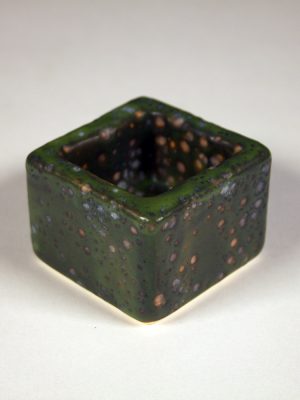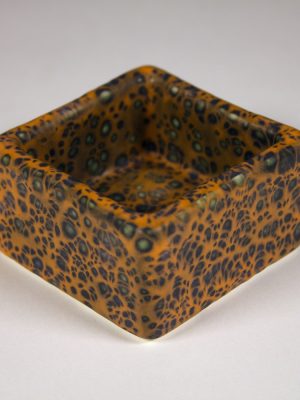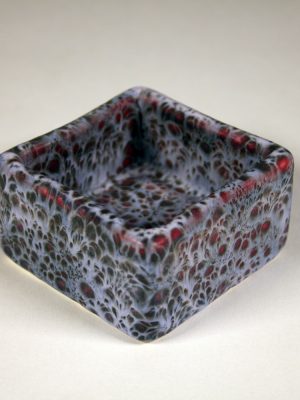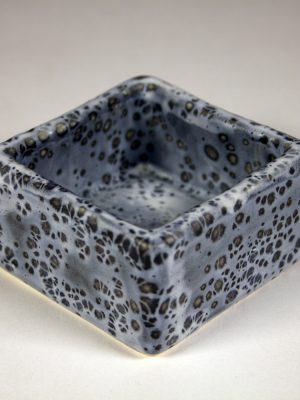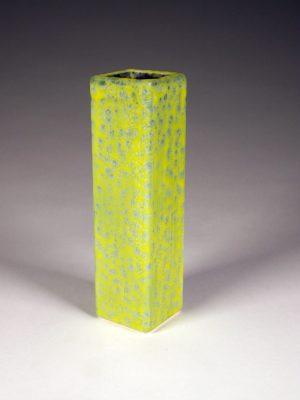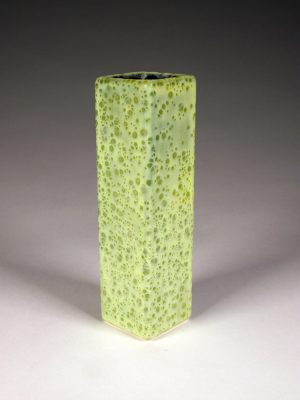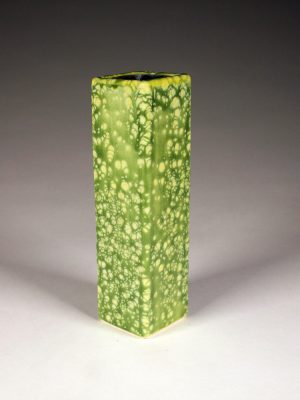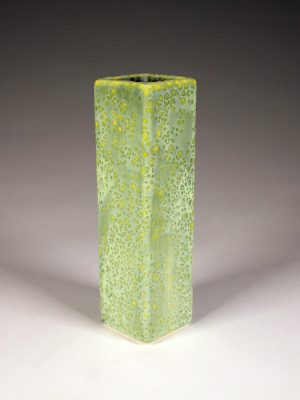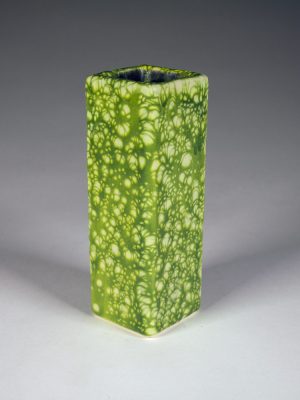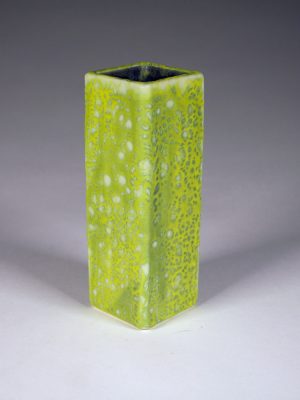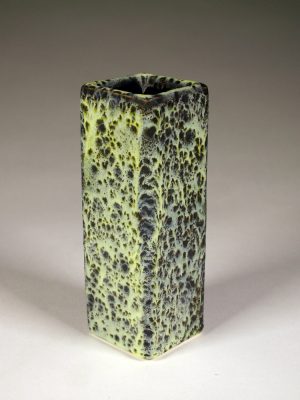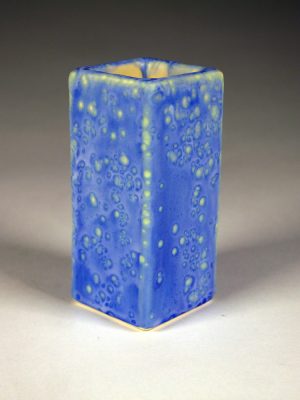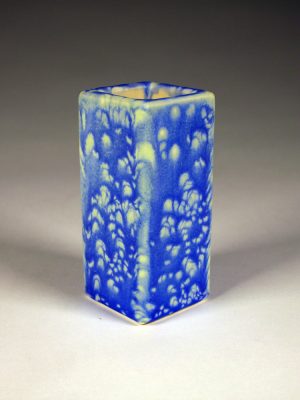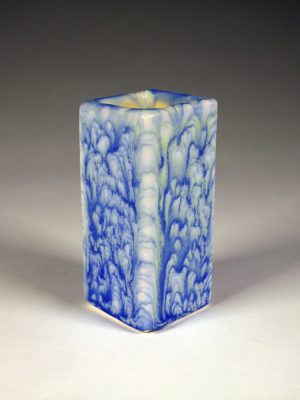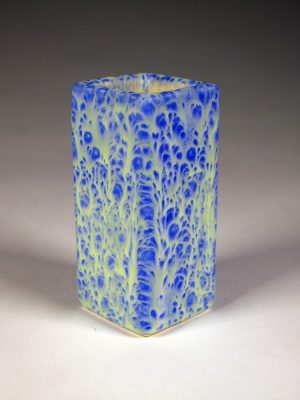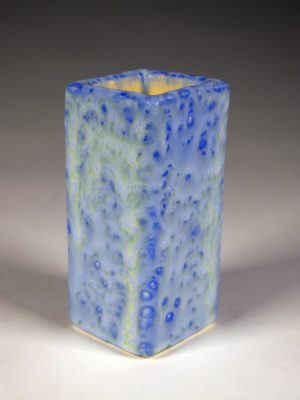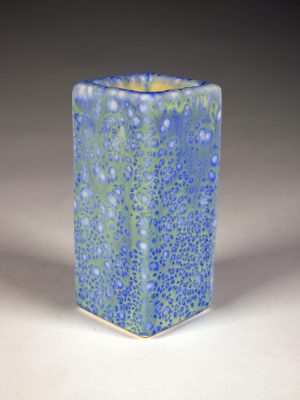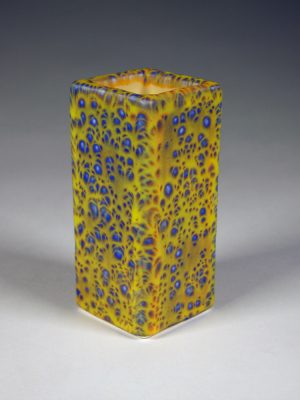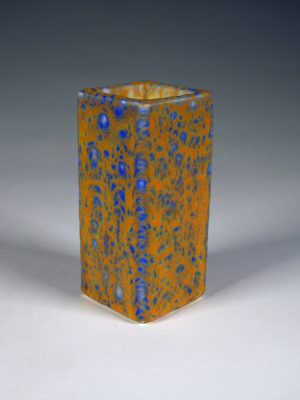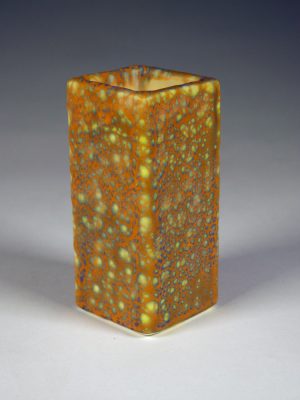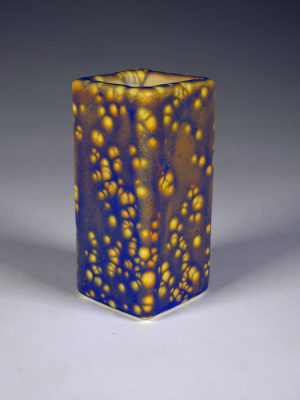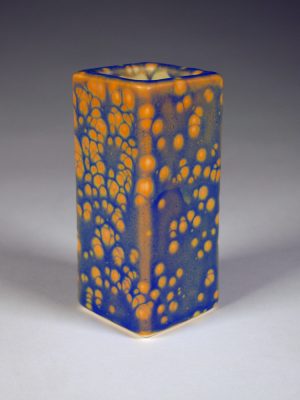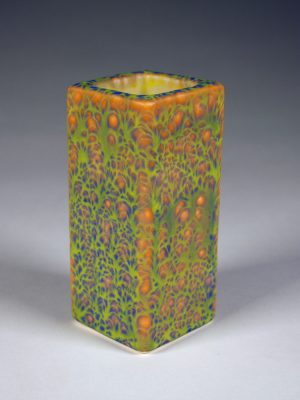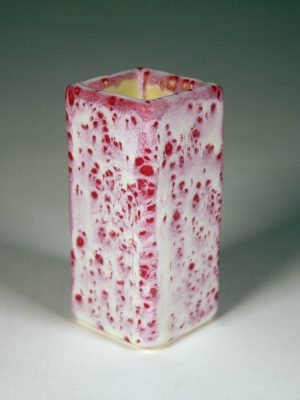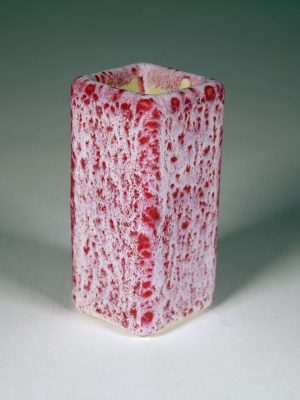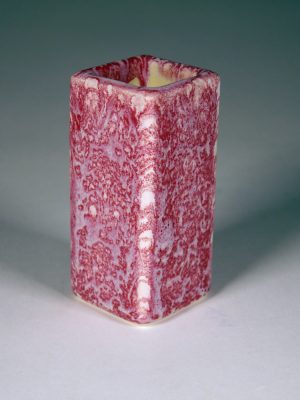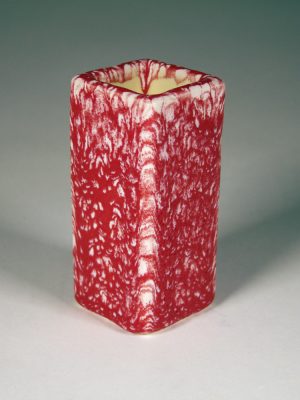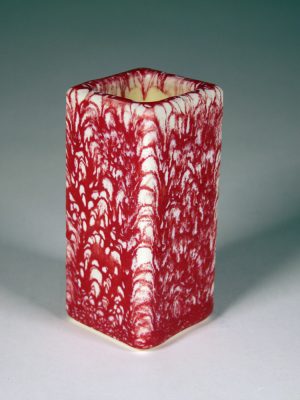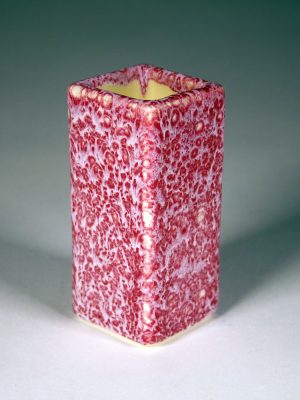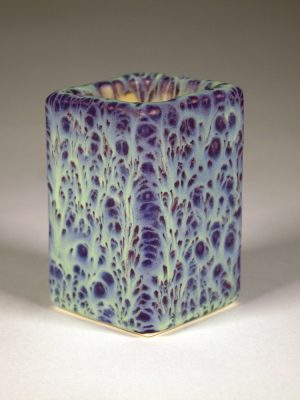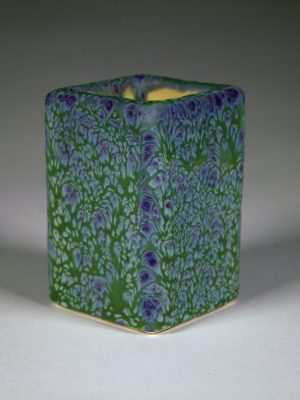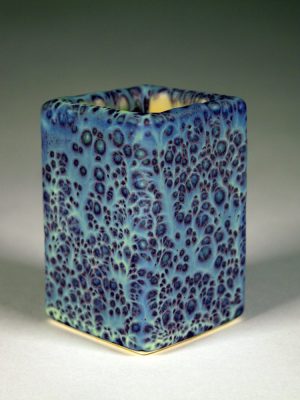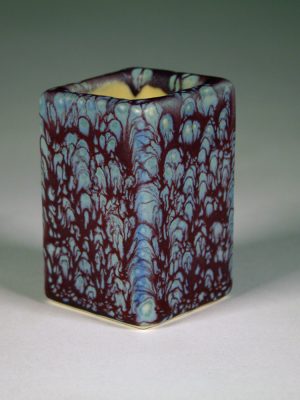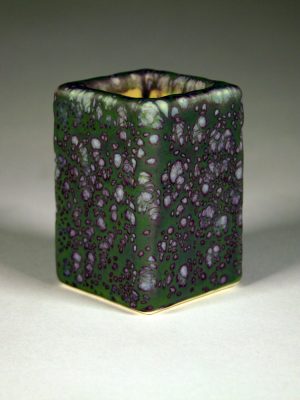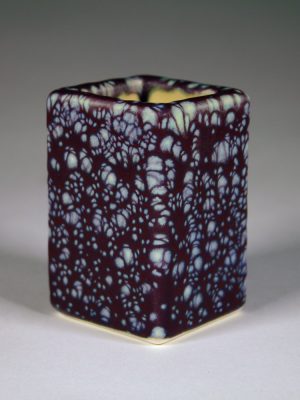Forty one new members of the glaze family based on my unique polymer additive. The array of surfaces is familiar from the last firing but the colours have changed.
With enough granules and a glaze combination of sufficient fluidity, the outermost layer forms a web over the surface. This can be seen in many of the tests. The melting granules push material out of their path as they make their way towards the surface of the porcelain, revealing the contrasting glaze strata in their wake. How deep each granule penetrates the layers depends on its mesh size.
The greens are more intense this time than last as a result of using a praseodymium instead of a vanadium yellow stain. The same praseodymium yellow was used with the orange-purples as well. There was a pale green layer in the red set but it seems to have been overpowered by the red and the erbium pink. Not much trace of it shows. The blues are light sensitive, containing both praseodymium and neodymium oxide. In certain light conditions they will appear more green, in others they may appear more blue or violet. The purple was made by mixing an encapsulated red with a cobalt blue stain. In test number 66, there are fine veins of red in the centre of a wider web of purple. A very subtle but interesting detail suggesting the additive exerts force differently on different component materials within a glaze.
I split the images into two sliders to make them more manageable. The first slider shows the newly fired combinations grouped together in sets. The second slider is more in depth with tests photographed and numbered individually.

